U.S. Department of Education Announces Moves Key Programs to Other Agencies, Weakening Federal Oversight and Destabilizing Services for Key Student Groups
Key Takeaways
- The U.S. Department of Education announced plans to shift major federal education programs to other agencies, weakening oversight and protections for students.
- Core responsibilities like Title I, Title III, data collection and technical assistance are at risk of disruption.
- These changes threaten civil rights protections for students from low-income households, emergent bilingual students, students with disabilities and LGBTQ+ youth.
- The move aligns with broader efforts to dismantle the Department of Education outlined in Project 2025.
- A fully staffed, fully functioning Department of Education is essential to ensuring equitable access to public education.
Resource from the Intercultural Development Research Association (IDRA), a nonprofit advancing education equity.
(November 20, 2025) This week, the U.S. Department of Education announced it will shift major, congressionally-mandated duties to other federal agencies through interagency agreements. These requirements include administering grants and providing technical assistance to states and school districts.
The department is framing these significant changes as bureaucratic “streamlining,” but they are likely to have deep impacts on public schools and are designed to implement this administration’s goal to dismantle the U.S. Department of Education completely.
Specifically, the announcement detailed shifts of programs funded under the Elementary and Secondary Education Act (ESSA) and postsecondary and workforce development programs to the Department of Labor.
The plan shifts the management and oversight of large pots of resources, including Title I programs that help to level the playing field and support student achievement, particularly for schools serving students from low-income households.
It also shifts management of Title III programs that support English learners and immigrant students.
Programs for Native American education will shift to the Department of the Interior; medical school and childcare access programs to the Department of Health and Human Services; and foreign language studies partnerships to the Department of State. Reports also indicate potential future shifts in the duties of the Office for Civil Rights and the Office of Special Education and Rehabilitative Services.
Risks to Students, Schools and Civil Rights Protections
Congress explicitly required the Department of Education to oversee key functions, including civil rights enforcement, major funding programs, data collection, and the provision of resources and technical assistance to schools.
Moving core responsibilities away from the Department of Education is likely to disrupt how states and districts receive guidance, technical support and critical financial resources to serve students, including students living in poverty, young people with disabilities, LGBTQ+ youth and emergent bilingual students.
“Students deserve robust federal protections and the resources to ensure equal access to educational opportunity,” said Celina Moreno, IDRA President & CEO.
“Shifting education programs to agencies without the mission or expertise to run them threatens funding stability, weakens civil rights protections and creates confusion for states and schools,” she said.
Why a Strong U.S. Department of Education Matters
A fully staffed, fully functioning U.S. Department of Education is essential to ensuring that every child in this country has access to a high-quality public education. Using interagency agreements to move these duties to other departments compromises that promise.
This shift is not surprising but is consistent with the policy and staffing agenda laid out in documents, such as Project 2025, and the executive orders and rhetoric of the current presidential administration.
We must push back against efforts to dismantle public education and against threats to the state and federal infrastructures designed to support all students and our public schools. Below are resources for you on the importance of these systems and on igniting action in communities across the country.
Resources to Understand and Respond to These Threats
Five Threats to Public Education in Our States and Communities – An Analysis of Project 2025
IDRA created this guide to help communities better understand our vision for students and our public education system and to address some of the prominent challenges to that vision, including Project 2025 and similar agendas.
The U.S. Department of Education’s Role in Serving and Protecting this Nation’s Students
This resource describes how the Department of Education protects and supports the rights of all students, especially those from historically marginalized backgrounds, to access a quality public education free from discrimination.
What the President’s Directive to the U.S. Secretary of Education Means for Students, Families and Schools
See how the recent executive order directing the Secretary of the U.S. Department of Education to dismantle the agency threatens consistent federal oversight, creates confusion around funding and program terms and weakens civil rights protections for vulnerable students, such as English learners, students with disabilities and students of color.
A Vision for Education in 2025 and Beyond – Educational Opportunities in a Changing Federal Landscape
Though a shift in presidential administrations and congressional leadership can result in changes to the policies and procedures of the federal government, it does not change the core rights and protections guaranteed to every student in the United States. IDRA’s vision for students and public schools persists despite significant changes to the federal education infrastructure.
For more information about IDRA’s policy work, please contact Morgan Craven, J.D., IDRA’s National Director of Policy, Advocacy and Community Engagement at morgan.craven@idra.org.
For more information about IDRA’s legal work, contact Paige Duggins-Clay, J.D., IDRA’s Chief Legal Analyst at paige.duggins-clay@idra.org.


